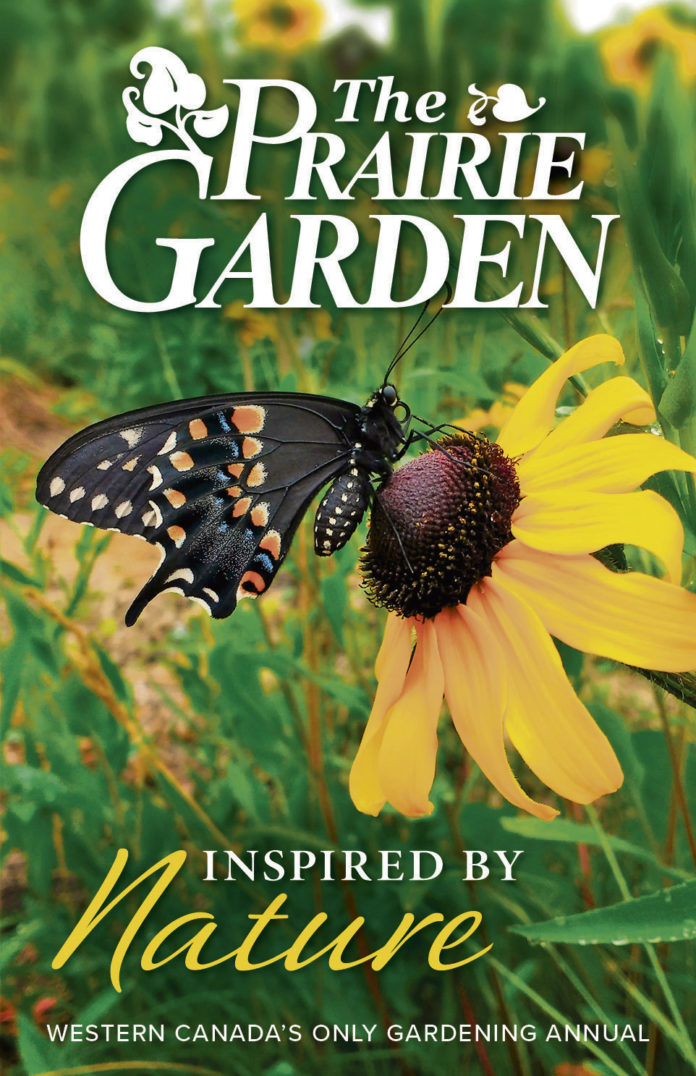Erl Svendsen, Saskatchewan Perennial Society
When I moved to the Prairies, it was to be for a short time – get a degree in horticulture science and escape back to Victoria, BC where you can garden 11 and half months a year (I’m making allowances for the occasional snowfalls).
This, because my mother, originally a prairie girl, regaled us with cautionary tales of minus 40 winters, blistering summers and walking to school, uphill both ways (but also of the dreary, desolate flat land). However, when I landed here, I was captivated by the vast expanses of blazing yellow, blue and gold in the summer and the subtle beauty, quiet and strength of the natural areas.
During my studies, I learned how some prairie native plants like wild roses had been used in breeding programs to increase the hardiness and disease resistance of their more tender cousins. And I learned about many other native plants that were ‘improved’ and are now grown in gardens around the world because of their colour, beauty and fortitude – like blazing star, yarrow, columbine, purple coneflower, beebalm, potentilla and goldenrod, just to name a few.
This is why I’m exited that the theme of this year’s The Prairie Garden is ‘Inspired by Nature’ (81st edition of Western Canada’s only gardening annual). With over 30 articles on gardening with native plants and an additional dozen on general gardening topics, this edition is an excellent primer on how to invite the Prairies into your garden.
And why should you grow native perennials. Because, they are survivors, adapted to our climate (unlike most of us), and are important pollen and nectar sources for bees, butterflies and other insects. Not only that, they are equal in beauty and diversity to the exotics from Europe and Asia.
The new edition starts off with an article by Janet Davis (a garden writer in Toronto whose Saskatoon and Prairie roots are deep), describing several of her favourite Prairie natives along with brief care and keeping instructions. Additional ‘plant’ articles are peppered throughout the publication – hardy cacti, native grasses, lady-slipper orchid, prairie crocus, milkweed (critical for monarch butterfly survival) and medicinal plants. If you live on an acreage, Sheryl Normandeau from Calgary offers advice on what to grow in your shelterbelt to attract wildlife.
For more intimate spaces, June Flanagan (botanist, environmental horticulturist from southern Alberta) shares her thoughts and experiences creating a nurturing environment for pollinators from early spring (when there are few options for early foragers) through to first frosts.
But Prairie gardening can be more than just introducing a few native plants into your yard. Indeed, your entire landscape can be inspired by the Prairies. This takes a lot more experience and knowledge to pull off – Prairie plants might be tough, but they developed in communities and specific environments that likely do not resemble your yard. Done right, a Prairie landscape requires fewer inputs and much less coddling. Done poorly, it can be a weed-filled hodgepodge of seemingly randomly placed plants. Luckily, several experts weigh in on how to transform spaces large and small into a Prairie-esque patches.
To start you along this path, Marika Olynyk (a Manitoba environmental educator with Nature Conservancy of Canada) describes what was here before colonialization. She dispels the myth that the Prairie region (which extends deep into the USA) was just a barren, unproductive and uniform grassland – Instead there was great diversity in plant communities consisting of grasses, perennials (forbs), shrubs and trees.
And while climate, soils and topography dictated what could grow on a site, Indigenous peoples managed these landscapes on the large scale for their own purposes. John Morgan (founder of Canada’s first Prairie restoration company) and several other native plant experts and enthusiasts provide a few guidelines, design tips and plant suggestions.
In addition, the publication includes a list of great references for further reading as well as direction to landscapes that can inspire.
There are so many gems in this edition of the Prairie Garden. I recommend picking up a copy for yourself or several as gifts for your gardening friends.
The Prairie Garden is a ‘non-profit publication dedicated to the advancement of horticulture on the Prairies.’ Available at most garden centres, book stores or online (www.theprairiegarden.com).
Erl gardens in Saskatoon and occasionally blogs about it (@ErlSv)
This column is provided courtesy of the Saskatchewan Perennial Society (SPS; saskperennial@hotmail.com ). Check our website (www.saskperennial.ca) or Facebook page (www.facebook.com/saskperennial) for a list of upcoming gardening events.


